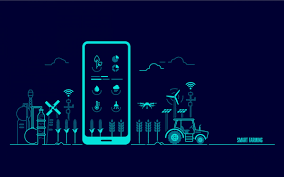The Internet of Things (IoT) is a method of exchanging information between multiple devices connected to a single network. It helps you collect, analyze, process, and transmit data through software or applications without human intervention. Using special sensors and sensors, groups of devices interact and perform different tasks.
How did IoT come about?
The Internet of Things (IoT), as a technology, owes its appearance to the implementation of radio frequency exchange technology between devices that can communicate in a standard network.
The first presentation of this innovative technology was made in 1999 at the University of Massachusetts for the pharmaceutical company Procter & Gamble. The primary purpose of this presentation was to prove the effectiveness of using radio frequency tags in warehouse and trade logistics systems.
For such a significant consumer cosmetics manufacturer, such a logistics management scheme was one of the ways to gain a competitive advantage in the market. As a radio frequency spectrum, it was planned to use the frequency range of HF and microwave frequencies and the radiation of the infrared spectrum.
Later, unified RFID technology was developed for IoT. The primary communication platform is high-speed Internet (3G and 4G), which can be used to combine networks of any complexity, where devices of various configurations and purposes are involved.
IoT in Business: How To Use IoT for Business?
Business Analytics
Without analytics, the development and very life of any business are impossible. Whether you want to cut costs, introduce a new product or service, or just need reliable information always available, all roads lead to analytics. In the Internet of Things, analytics is one of the critical links. It combines them into a single structure:
- Physical devices,
- Directly received data from them and
- Business processes.
Without such a structure, it is impossible to achieve Return On Investment (ROI).
At the same time, IoT solutions should not cost more than the data itself and require re-equipment of the entire existing business infrastructure. If the collected analytics help the company save money or create new successful projects for more than the cost of installing and maintaining the device, the solution will be profitable. If not, forget about it, so you will not achieve a return on investment. Within the expenses, you must consider the cost of the sensor, its installation, updating, maintenance, and analysis platform.
Big Data
Big Data is not only an efficient way to store data, but also to fill it with content, additional information, and new value. This large Excel file contains all the direct and indirect information from sensors. All data received from connected devices is stored in the cloud. They allow you to identify patterns, automate existing processes, or build new ones. At the same time, information can be obtained in real-time in two ways: in graphical visualization or the form of historical analytics. In other words, analytics are also enabled here. It helps you bring more meaning to the data stored in Big Data and visualize the information so that you can make a decision.
- Connection
For the device to send information, you must somehow transfer data between the device and the cloud. Otherwise, your data will be blocked inside the sensor. This can be done in real-time via a radio frequency or cable or asynchronously by connecting a PC / smartphone to the device to download them.
Sensors constantly generate information about the state of assets (location, temperature, light, impact, etc.), and it is transmitted to the platform for storage and analytics. In this regard, the demand for the network itself also increases: it must withstand the load 24 hours a day, seven days a week, and provide access to data from devices with a 99.99% probability at a minimal cost. Unlike the 5G network, which works with a large amount of data from a single source, the 0G network involves receiving information from millions of sensors, processed and analyzed.
- Device/Sensors
For the entire system to work smoothly and without losses, you need to select devices for specific tasks. For example, sensors must have an appropriate message frequency and depend on the object. Therefore, it will be different (the detection threshold, accuracy, and other parameters may change). In addition, the ease of installation of the device and its service life is essential to coincide with the life cycle of the object on which it will be placed. In this case, maintenance costs will be reduced.
- Experience
Implementing any solution, including a technological one, requires a deep understanding of the client’s problems. This requires experience obtained by studying and analyzing someone else’s practice or performing a large amount of practical work. Creating unique projects “from scratch” will be pretty expensive. Instead, study the experience. Maybe someone somewhere has already successfully solved a similar problem.
Conclusion
Many business organizations are using IoT in different everyday business activities. It helps them conduct various activities and keep everything in order. Get started with Fusionex and get excellent solutions for your business.

